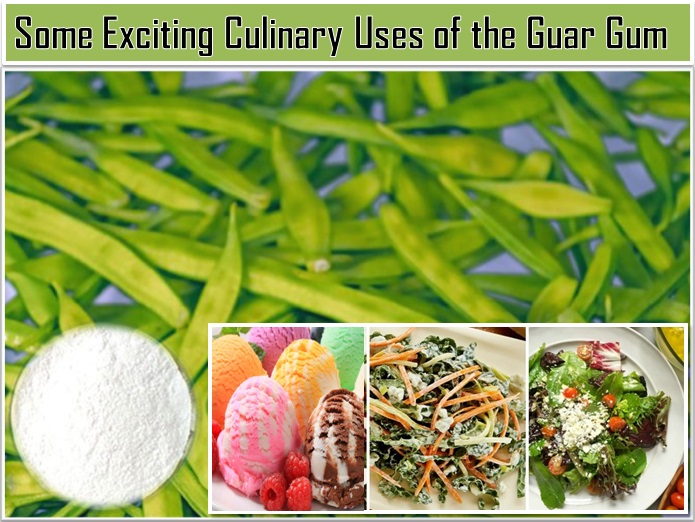The guar gum is a long chain polysaccharide composed of two basic sugars, which are the mannose and the galactose. Similar polysaccharides include starch and cellulose. The powder is extracted from the Cyamopsis tetragonolobus plant, which is dominant in the Asian continent and widely cultivated in India.
The guar gum has extensive applications in various industries due to its thickening and gelling properties.
It is a useful thickener in consumer products such as sauces, salads, salad dressings, and it has gained popularity due to these numerous properties.
Important Properties for Culinary Application
The guar is at least eight times more powerful than the ordinary thickeners. One good advantage is that it never requires heat to form a gel. It prevents the formation of ice crystals in foods.

Application in Pastries
In very small quantity, it helps the dough to retain the water, thus remaining crisp dry and the quality of the final product is guaranteed. When combined with xanthan gum the viscosity of the resulting product is very high hence, they complement each other.
When the guar gum is used in the place of flour, only one sixteenth of the portion is used, showing that it is a far more efficient thickener compared to others.
Incorporating Guar Gum to Food
No heat is required for thickening; therefore, it is perfect for cold dressings. The guar gum does not change the taste of the sauce as it is applied in very small quantities compared to other ingredients. While adding to the sauce, it is recommended to add the guar by one eighth to one-quarter teaspoon increments while stirring or shaking well. Addition of too much of the powder at once tends to give a gummy texture to the food.
Clumping
This happens often when the guar gum powder is added to the food all at once. This is prevented by sprinkling the powder evenly over the sauce. You may also use the spice shaker if it is available.
Gluten Sensitivity
Gluten is a classification of proteins found in grains such as wheat, barley and rye. In these plants, wheat is the most commonly consumed. These proteins are referred to as the glutenin and the gliadin. Some people experience health problems after consuming foods with gluten in them. These problems include the celiac disease, allergy to wheat and in some cases sensitivity to gluten. Symptoms include diarrhea, stomach discomfort and pain, tiredness, bloating and even depression.
Gluten Free Baking
This method of baking is for people who are sensitive to gluten. The guar gum powder is used as a binder, replacing the protein “gluten” and retaining the physical properties of the product. The quantity of the guar powder used varies with the recipes, but as a rule, one cup of flour free of gluten, is mixed with one-half teaspoon of the guar powder.
Some gluten free products include buttermilk biscuits, gluten free chocolate, chip cookies, pancakes, bread, gluten free brown flour, rollable Pie Dough, pizzas and many other exciting foods.
